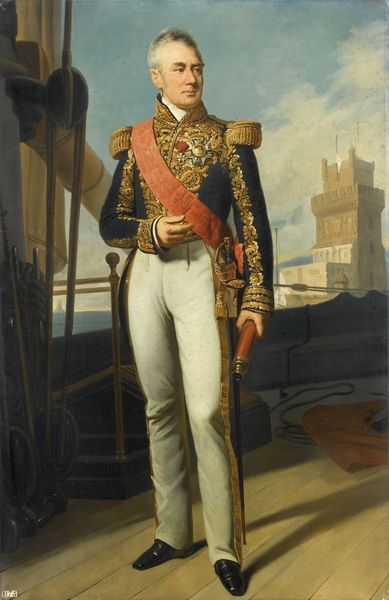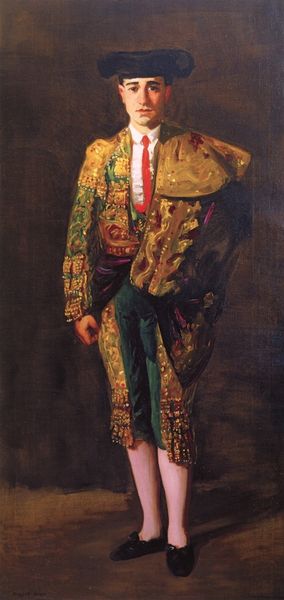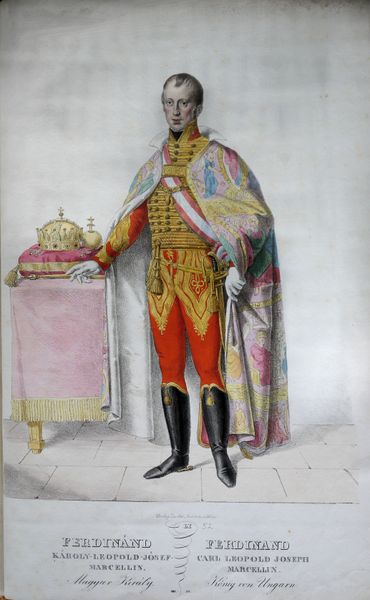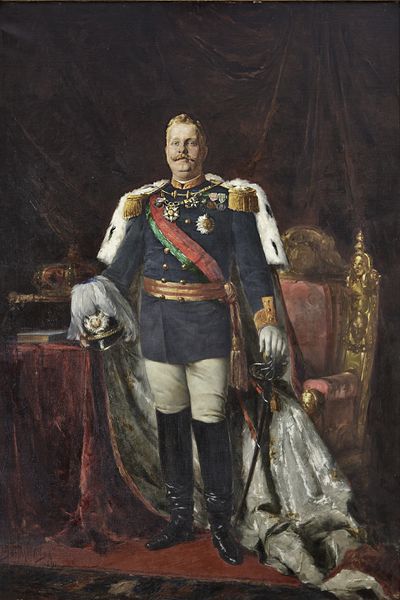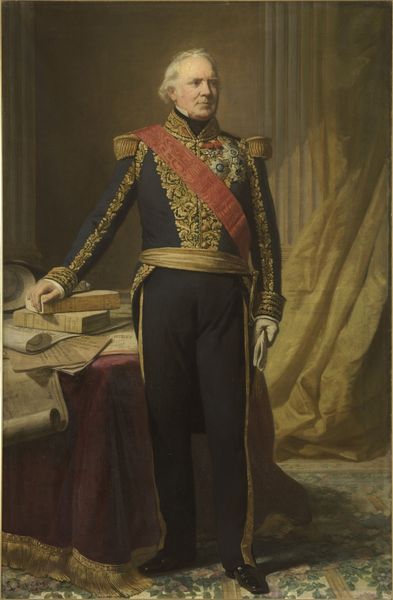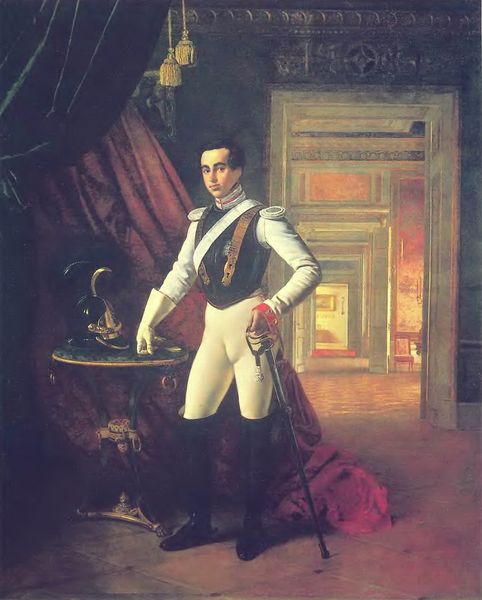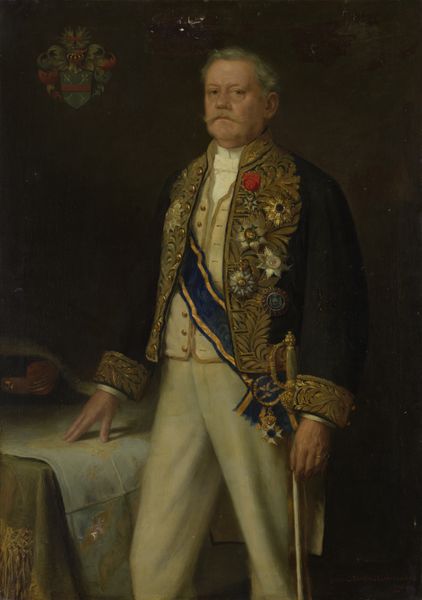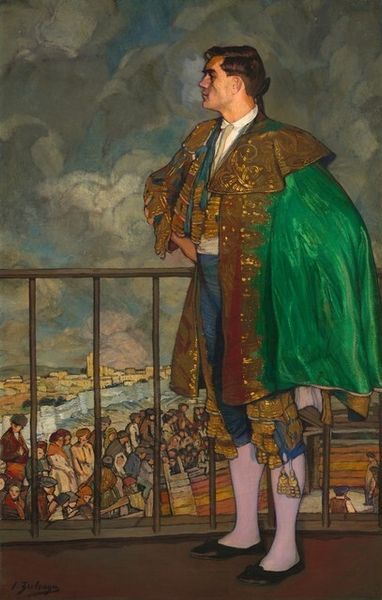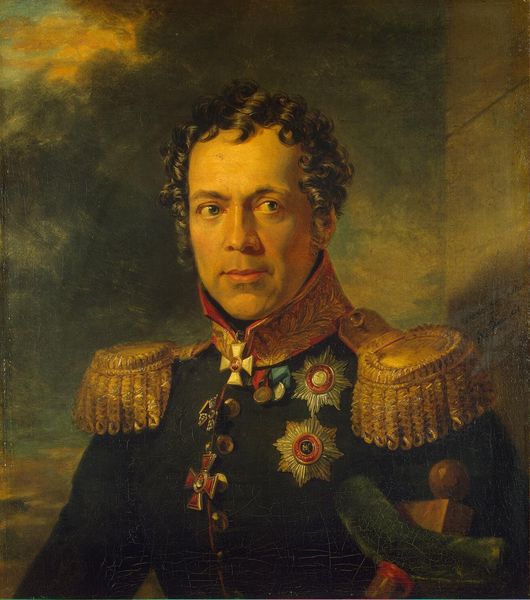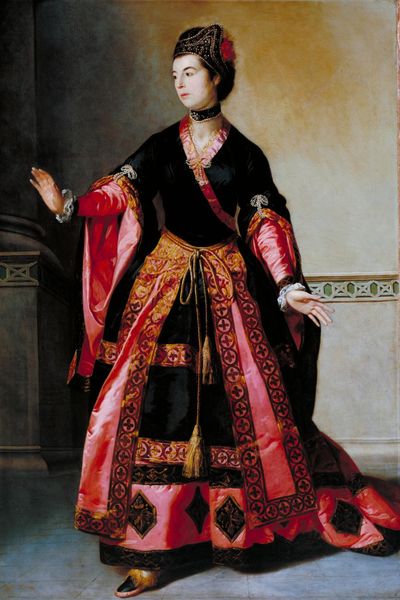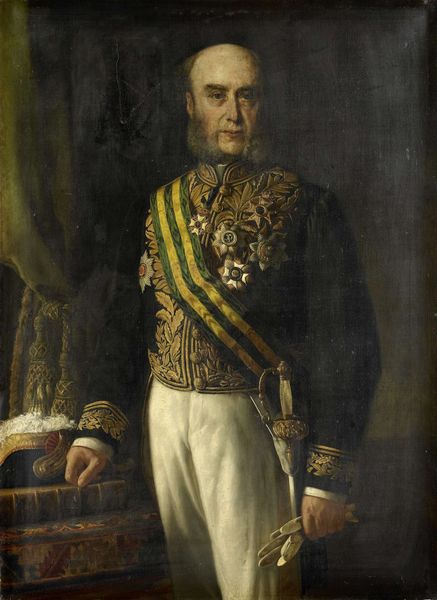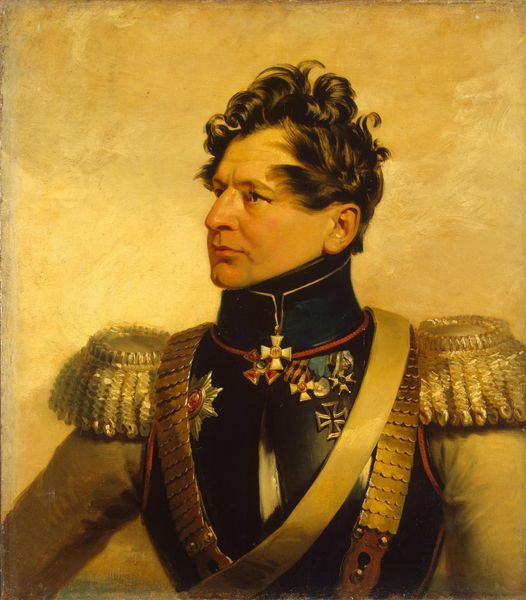
painting, oil-paint
#
baroque
#
painting
#
oil-paint
#
oil painting
#
orientalism
#
history-painting
#
portrait art
Copyright: Public domain
Curator: This is "Hasekura Tsunenaga in Rome," a rather striking oil painting believed to have been created around 1615 by Claude Déruet. Editor: My goodness, what a statement piece. It's this incredibly poised portrait that radiates a strange mix of confidence and… displacement, maybe? Curator: Displacement is spot on, actually. The portrait commemorates Hasekura Tsunenaga's diplomatic mission to Europe. Sent by Date Masamune, a powerful Japanese feudal lord, to establish trade relations with Spain. Hasekura met with the Pope in Rome! Editor: Wow, that’s… well, visually, it's almost like two worlds colliding in one frame, isn't it? Look at the layering; you've got his ornate Japanese garments – the soft color, the golden botanical motif – then there's the slightly less distinct background – some drapery, but also a ship at sea with some angelic figures looking over the sea. It looks surreal. Curator: Precisely, and that background almost acts as a window onto the ambition that fueled this journey. It’s all very carefully calibrated; the Baroque style clashes elegantly with Orientalism. Look at the posture; very poised, almost formal. The hint of shadow across his eyes, giving him a mysterious expression. What does this mission actually mean to him? How far from home and what are his thoughts about this event. I find it impossible not to wonder what’s going through his mind. Editor: It does make you wonder. All of that detail screams a need to carefully curate and control the narrative of cultural exchange. Every single object, from the sword at his waist to even his adorable little dog looks like the way he uses them to declare, I am the emissary, but I am Japanese. Do you know who comissioned this painting? Curator: The question of who comissioned this work remains unanswered to this day! What we can ascertain is that this piece served as a symbolic chess move on a much larger board of global trade and politics, not devoid of religious ambitions too, as Hasekura had to convert to Christianity to be granted an audience by King Philip III. Editor: It's heavy. Considering the legacies of colonialism and how these interactions were often forced or exploitative. Makes you wonder about the personal toll. It's beautifully rendered. The oil paint gives that wonderful sheen and depth, but the deeper I look the sadder this seemingly confident character seems to look. Curator: Ultimately, it's a complex image of an exceptional man navigating a world in flux. Editor: Absolutely. Art history through the ages: so much more than what meets the eye.
Comments
No comments
Be the first to comment and join the conversation on the ultimate creative platform.
